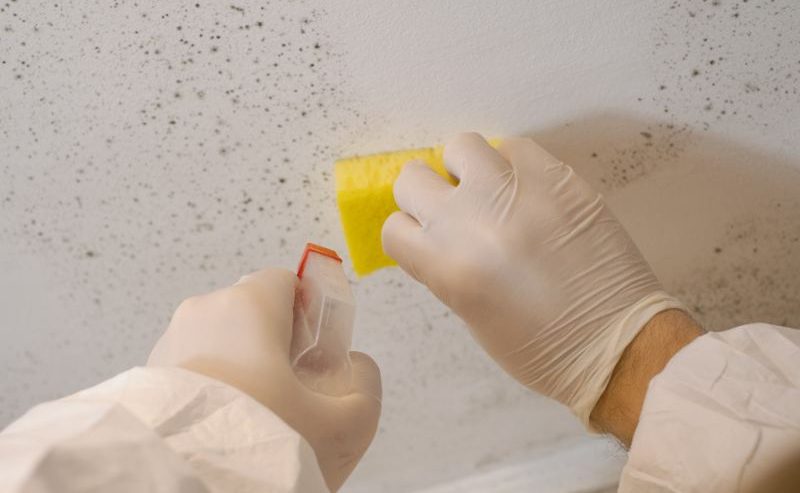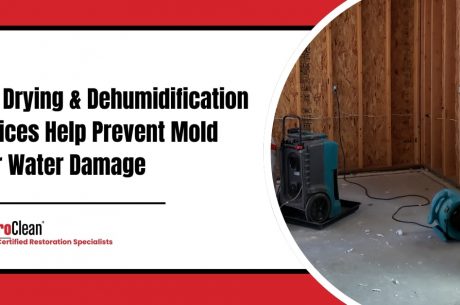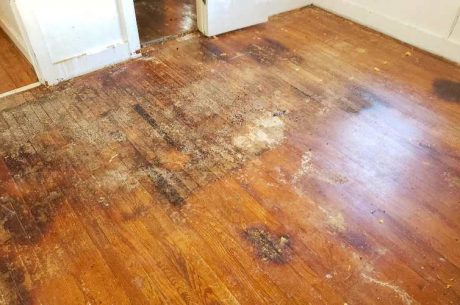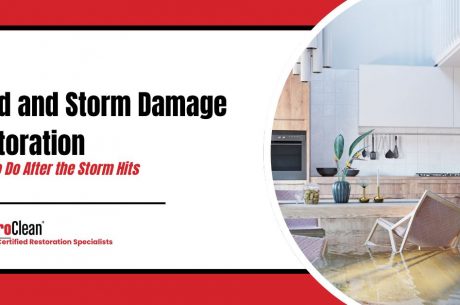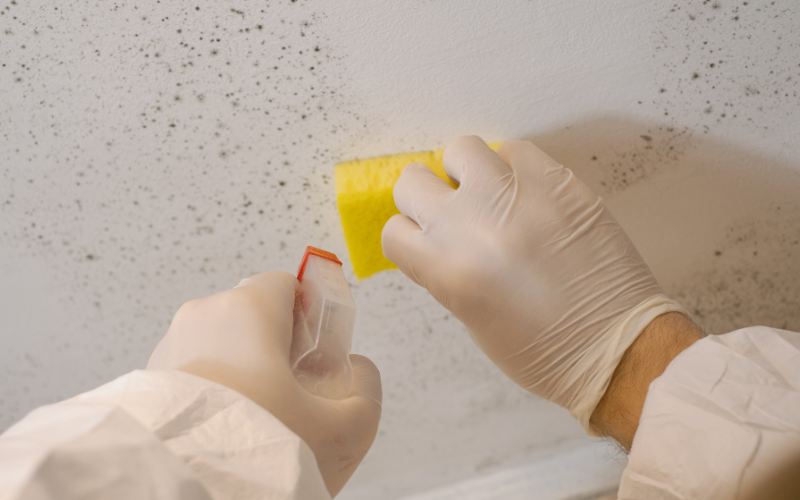
Image by Canva
Dealing with mildew in your home can be frustrating, especially when it seems to appear out of nowhere. What is mildew, and why does it seem to thrive in certain areas? It’s a problem many homeowners face, especially in spaces prone to dampness and poor ventilation. Understanding how to keep your home safe from this pesky fungus can make a big difference.
In this guide, we’ll explore practical tips to prevent mildew and maintain a healthier living environment. From improving airflow to addressing moisture problems, small changes can go a long way. If mildew persists despite your efforts, seeking help from professional mold specialists can ensure your home stays clean and safe for everyone.
What Is Mildew and How Does It Form?
Mildew is a type of fungus that thrives in warm, damp, and humid conditions. It appears as a thin, powdery, or fluffy growth, often white, gray, or yellow, and typically forms on organic materials like wood, fabric, or paper. Mildew forms when spores land on moist surfaces and begin to grow, feeding on organic matter. Poor ventilation, excess humidity, and water leaks are common causes of mildew growth. It can spread quickly if not addressed and may cause structural damage or health issues like allergies and respiratory problems.
Tips to Prevent Mildew in Your Home
There are several effective ways to prevent mildew from forming in your home. By maintaining cleanliness and controlling moisture, you can protect your living spaces from this unwelcome and unhealthy growth.
1. Control Humidity Levels
Keep indoor humidity levels below 60% by using dehumidifiers or air conditioners. High humidity encourages mildew growth, especially in damp areas like bathrooms or basements. Regularly check your home’s humidity levels using a hygrometer. Proper ventilation, such as exhaust fans, is key to reducing excess moisture. Also, avoid overwatering plants indoors, as they can increase humidity. By managing the moisture in your environment, you create a space where mildew cannot thrive, keeping your home fresh and healthy.
2. Fix Leaks and Plumbing Issues
Address plumbing leaks or roof problems promptly to prevent water accumulation. Even minor leaks can lead to mildew growth if left unchecked. Inspect areas under sinks, around windows, and near appliances for signs of water damage. Dry any wet areas immediately and repair the source of the leak. Regular maintenance of plumbing and sealing gaps around windows or doors helps prevent moisture from seeping in. This proactive approach keeps your home dry and mildew-free.
3. Ensure Proper Ventilation
Improve air circulation by using fans or opening windows when weather permits. Poor ventilation traps moisture, creating a breeding ground for mildew. Install exhaust fans in spots prone to moisture, like kitchens, bathrooms, and laundry rooms. When cooking or showering, always use these fans to remove excess humidity. If natural ventilation isn’t sufficient, consider adding mechanical options to improve airflow. A well-ventilated home reduces condensation and keeps mildew at bay.
4. Clean Regularly and Thoroughly
Regular cleaning prevents mildew from gaining a foothold in your home. Pay extra attention to damp areas like shower curtains, bathroom tiles, and kitchen surfaces. Use mold-resistant cleaning solutions or a mix of vinegar and water to sanitize these areas. Wash fabrics like curtains and towels frequently and dry them thoroughly. Cleaning dust and dirt also helps because they can trap moisture, providing the perfect conditions for mildew growth.
5. Use Mildew-Resistant Products
Opt for mildew-resistant paint, caulk, or grout in areas prone to dampness. These products contain antimicrobial properties that inhibit mildew formation. They’re especially useful in bathrooms, kitchens, or basements where moisture exposure is higher. Applying mildew-resistant paint on walls and ceilings can offer a long-lasting barrier against mildew. Consider using washable or treated curtains, cushions, or upholstery to add an extra layer of protection throughout your home.
6. Dry Wet Areas Immediately
Never allow water to sit on surfaces like counters, floors, or carpets. Wipe spills, mop floors, and dry any wet furniture or clothing as soon as possible. Prolonged dampness is one of the leading causes of mildew. Use fans or open windows to dry out rooms after cleaning. In cases of flooding or accidental water damage, hire a professional service to ensure everything is completely dry. Preventing lingering moisture is a key step to stop mildew from forming.
7. Store Items Properly
Keep items like clothing, books, and papers in dry, well-ventilated areas. Use airtight containers or vacuum-sealed bags for storage in basements or attics. Avoid placing boxes or furniture directly on the floor in these areas, as they can absorb moisture from the ground. Adding silica gel packets or moisture-absorbing products to storage spaces can help control dampness. Proper storage prevents mildew from developing and protects your belongings from damage.
Frequently Asked Questions
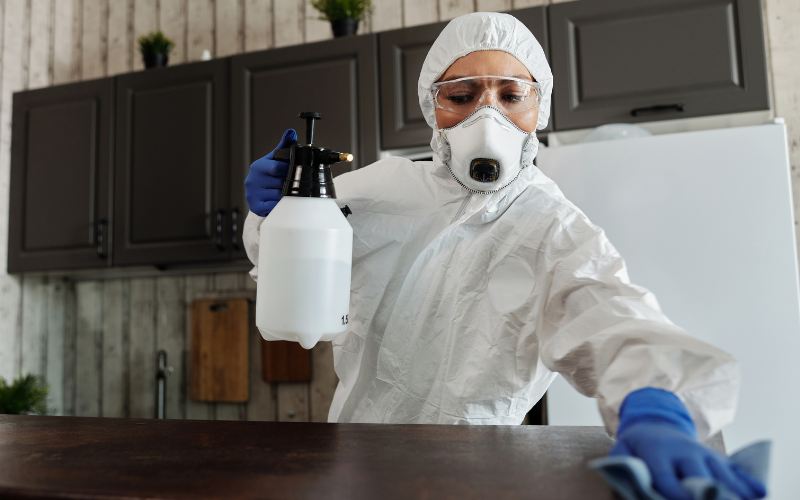
Image by Matilda wormwood from Pexels on Canva
Can mildew be harmful to pets?
Yes, mildew can harm pets, especially those with respiratory issues or allergies. Prolonged exposure to mildew can cause sneezing, coughing, or skin irritation in pets. To protect your furry friends, ensure your home is clean and dry, and address any mildew growth promptly to minimize risks.
Does mildew grow only in dark places?
No, mildew doesn’t exclusively grow in dark areas. While it often thrives in dim, damp spaces, it can also grow in well-lit environments if moisture levels are high. Keeping areas dry and ventilated is more important than just focusing on lighting to prevent mildew.
What is mildew, and how is it different from mold?
Mildew is a type of fungus that primarily grows on surfaces like fabric, wood, or paper, while mold often penetrates deeper into materials. Mildew is typically powdery and light in color, while mold can appear slimy and come in various dark hues like black or green. Both thrive in damp environments.
What is mildew, and can it cause damage to furniture?
Yes, mildew can damage furniture by breaking down organic materials like fabric or wood. Over time, it weakens the material, causes discoloration, and leaves behind a musty odor. Prevent this by controlling humidity, ensuring proper ventilation, and promptly cleaning any furniture exposed to moisture or damp conditions.
Conclusion
Understanding “what is mildew” and how to prevent it can protect your home and health. By controlling humidity, fixing leaks, and ensuring proper ventilation, you can keep mildew at bay. Remember, persistent mildew may require professional help to ensure your home remains safe and clean.
If you’re dealing with stubborn mildew or mold issues, contact PuroClean Zephyrhills today. We specialize in expert mold remediation services to restore your home to a healthy and safe condition. Don’t wait—call us now for peace of mind!
